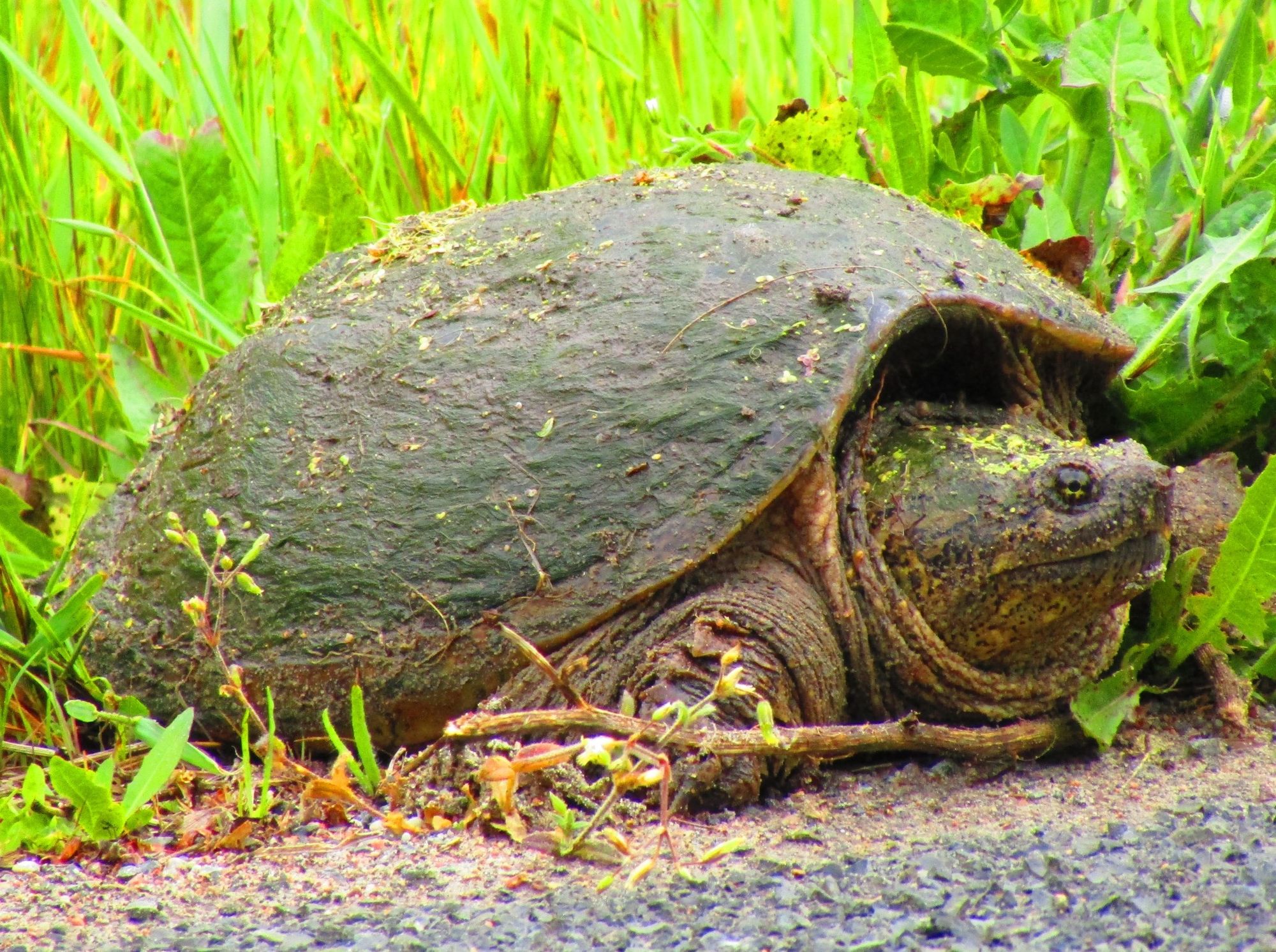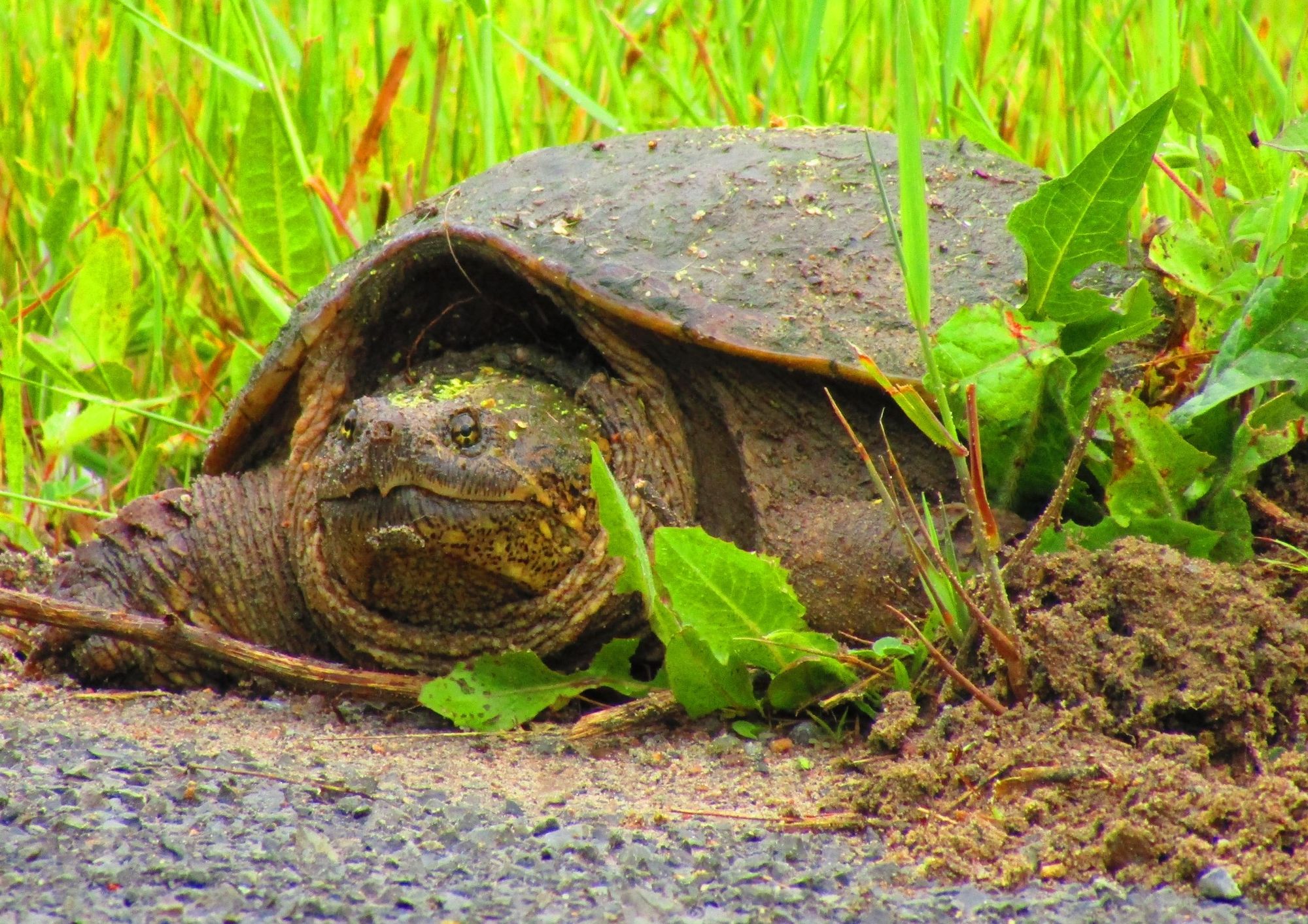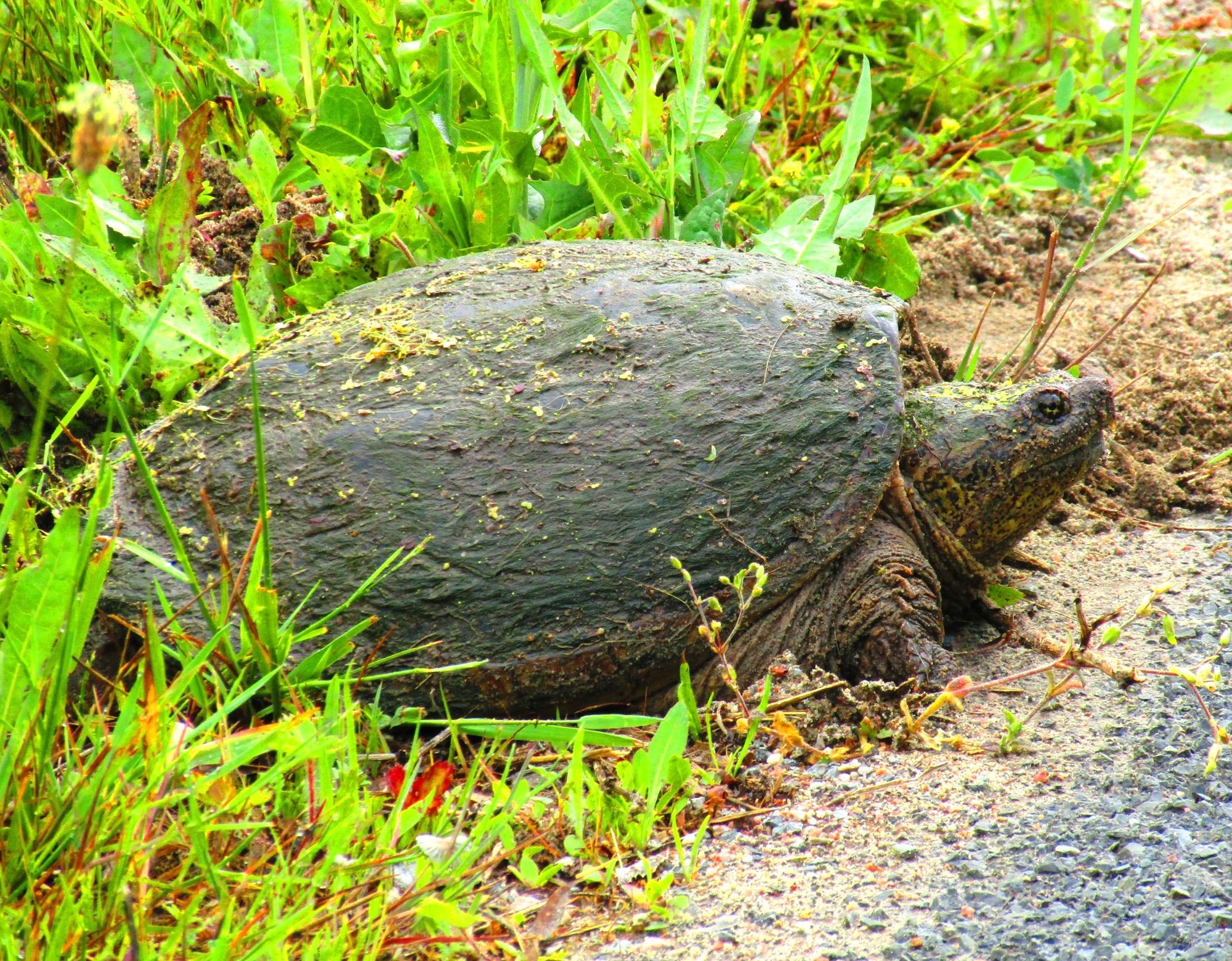For the most part, jogging along the road that leads to our camp is relatively safe from any major predators. I was having second thoughts about that concept on one particular morning run last summer. When I first spotted the giant turtle at the side of the road, I have to admit that my first thought was that it had a face only a mother (turtle) could love.

As an aspiring amateur photographer and nature lover, whenever I head out for a walk or run by the River, I have my camera with me. The River really is a nature lover’s wonderland, so I head out with great expectations, ready to encounter the amazing, the exciting, and the most beautiful of all God’s creatures. Sometimes, it doesn’t quite work out the way I had envisioned it. On that particularly lovely morning, I had set out with great anticipation. But almost two miles into my run, I hadn’t seen so much as a butterfly. As I headed back, I spotted a large lump at the side of the road. My first thought was that someone had dumped some litter, though I didn't remember seeing it on the way out. As I got a little closer, I suddenly realized the lump was staring back at me. To my surprise, it was a giant turtle – a giant snapping turtle to be exact.
Now, as much as I love almost all wildlife, I am a little less than enthusiastic about snapping turtles. It’s probably not their fault that they’ve gotten a lot of bad press, but I would guess that some of it is not without merit either. I remember a time when my husband Bob stopped the car to help a snapping turtle safely across the road. He managed to pick the creature up and get it to the side, but not without a loud hiss and a whiff of the worst bad breath one could imagine.

Not wanting to experience either a hiss or bad breath, I stopped just across the street from the turtle and we silently sized each other up. Since he seemed to be stalled out at the side of the road (probably weighing the option of crossing it), I walked a little closer and took some pictures. I thought that if that’s all the wildlife I was going to get that morning, I shouldn’t waste the opportunity.
Some might call him (or her) nice looking, but my initial thought was that only another turtle would think so. As I looked a little closer, I realized he was growing algae on his shell and apparently didn’t seem to mind at all. When I got home and looked at the pictures more closely, I decided he really wasn’t so ugly after all. Or, perhaps ugly in an endearing kind of way.
When Bob and I drove back down the road later that day, there was no giant snapping turtle so he either reconsidered the crossing, or made it safely across the road and back to where he could keep his algae watered. It is quite possible if he had still been there, Bob might have tried another wildlife rescue service, but would be sure to avoid any malodorous exhalations.
The Common snapping turtle (Chelydra serpentina) is a large freshwater turtle noted for its combative disposition when out of the water, and its powerful “snapping” jaws. In 2006, the common snapping turtle was declared the state reptile of New York. It gets its scientific name (serpentina or “snake-like”) from the shape of its long, flexible neck and beak-like mouth, which grabs both prey and predators.
Some have even compared them to prehistoric dinosaurs, with their large, muscular build and rigid shell that can grow up to 18 inches across. I read that they can weigh anywhere from 10 to 35 pounds and can live up to 100 years. They are omnivorous - meaning that they will eat just about anything. But they are active hunters that use ambush tactics to prey on anything they can swallow, including fish, frogs, other amphibians, reptiles, birds, and small mammals.

In their own environment, snapping turtles are at the top of the food chain, so they’re not easily intimidated. I read that when they encounter a species unfamiliar to them, such as humans, they will become curious and survey the situation and may even bump their nose on the leg of a person standing in the water. But despite being known for hissing, bad breath, and a fierce disposition, when encountered in the water or a swimmer approaches, they will usually just slip quietly away from any disturbance or seek shelter under water.
I would guess that people who have read my other articles might be expecting something profound and life changing about snapping turtles at this point. You will be pleased to know that I discovered the snapping turtle is able to hibernate during the winter months under the surface of frozen northern lakes and rivers using a technique called cloacal respiration, which is also known as “butt breathing”. Through cloacal respiration, turtles get oxygen from the water by moving the water over their body surfaces covered in blood vessels. The turtle’s cloaca, which is essentially its rear end, has a lot of blood vessels, so the most efficient way to get oxygen is through the cloaca. I read that the main turtle group that has truly mastered cloacal respiration is river turtles. I had clearly underestimated that snapping turtle's exceptional talents. Truly, he wasn't just another pretty face!
I grew up thinking of snapping turtles as dangerous and volatile creatures to avoid at all costs. Unlike Bob, I still won’t try to pick one up if I see it at the roadside. But I have definitely misjudged the snapping turtle. And that’s really not fair to the turtle or his creator. In fact, that turtle is pretty incredible. Like the Psalmist, I could say, “O Lord, what a variety of things you have made! In wisdom you have made them all. The earth is full of your creatures” (Psalm 104:24). Up to this point I would not have thought that that includes snapping turtles with bad breath, who grow algae on their backs, and who breathe out of their butts. But I guess I now know better. It was a good reminder that all God’s creatures are pretty amazing!
By Patricia Mondore
Patty Mondore and her husband, Bob, are summer residents of the Thousand Islands. Patty's most recent books include "
